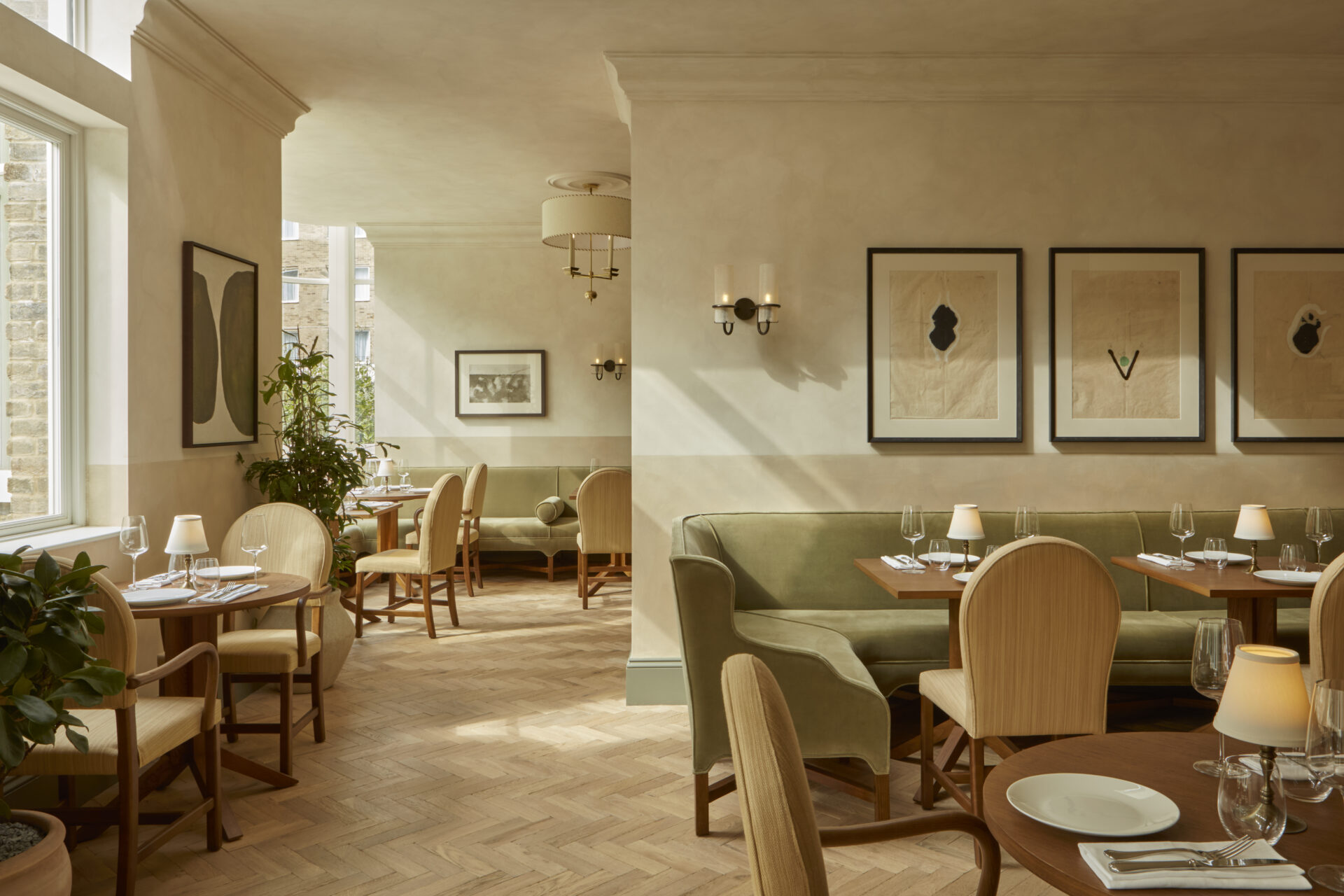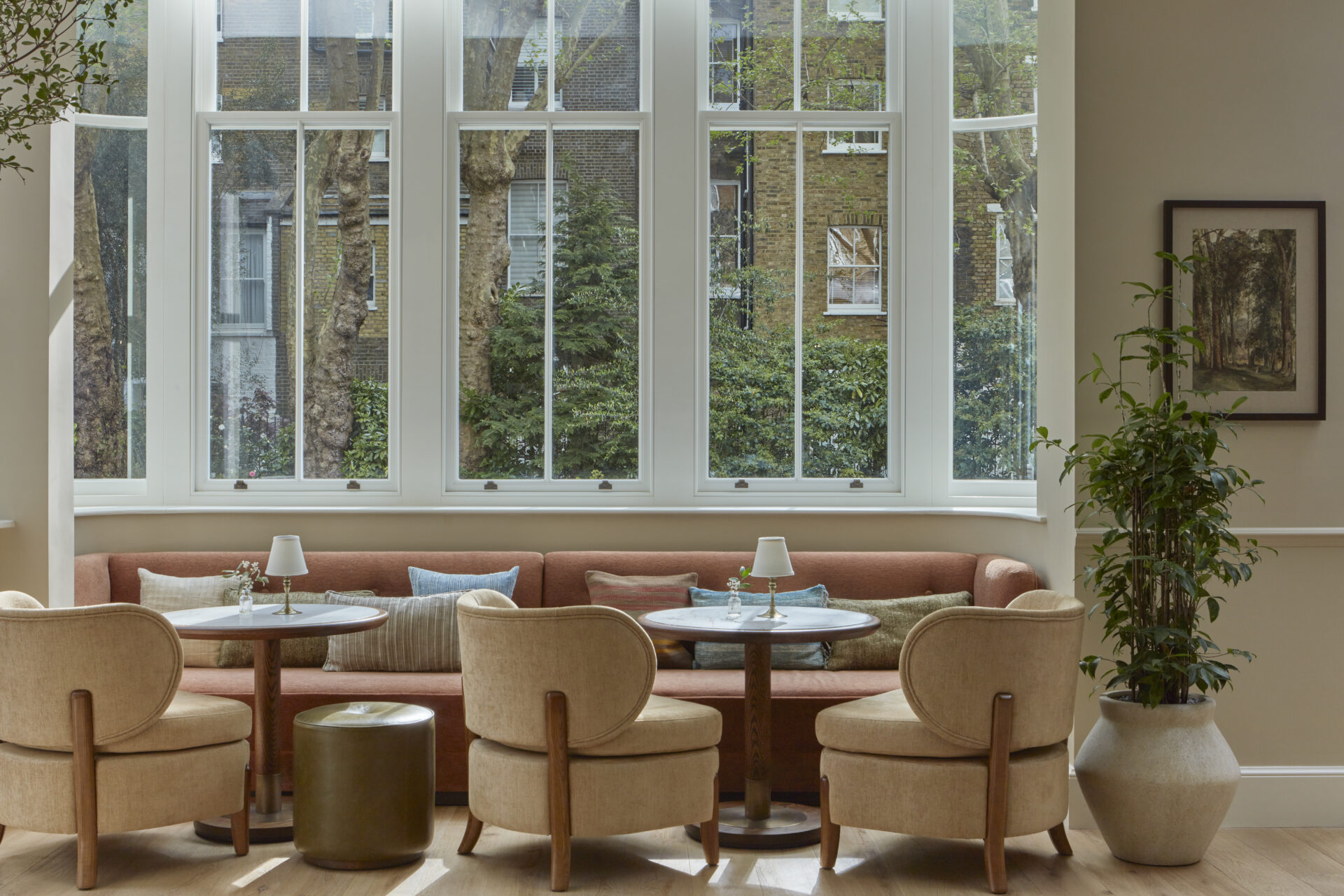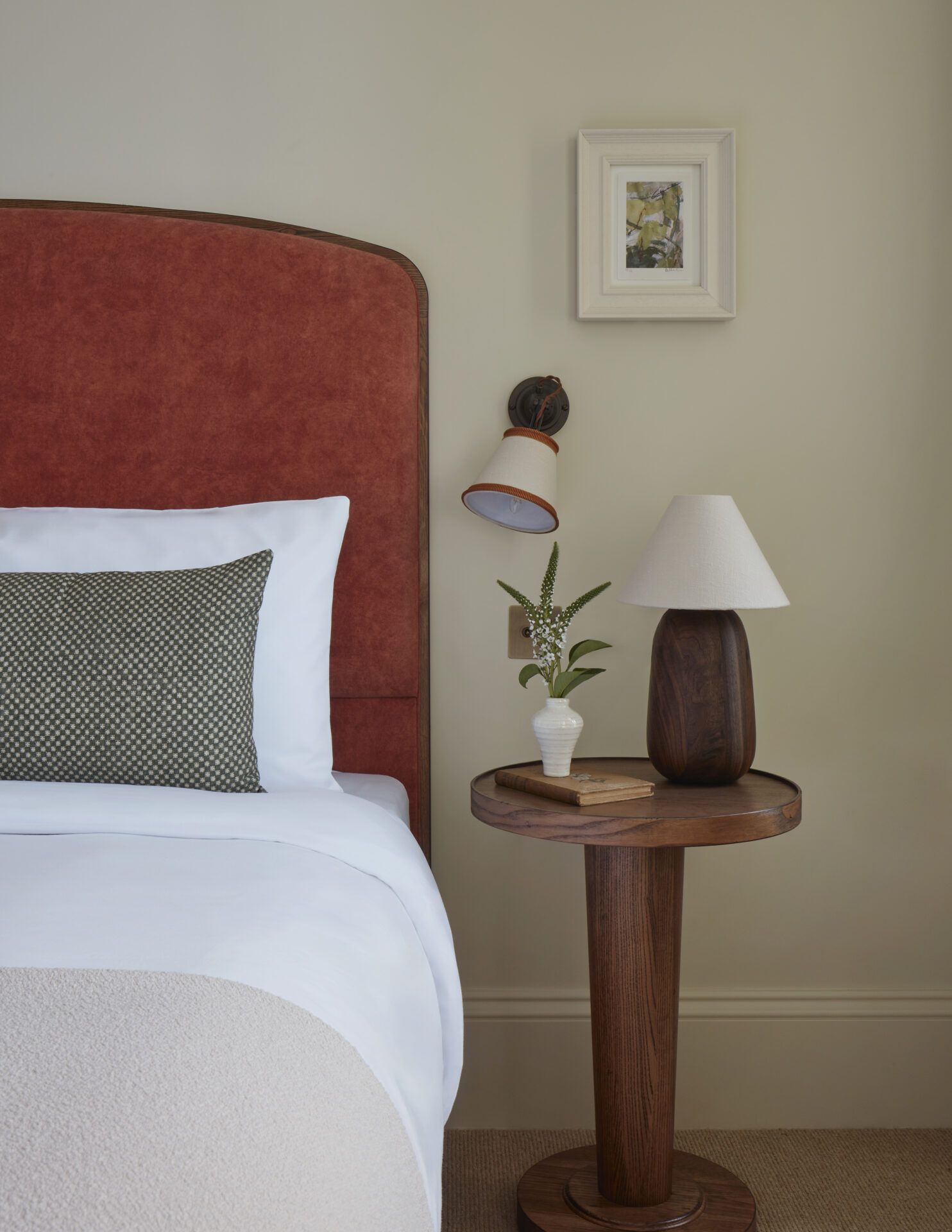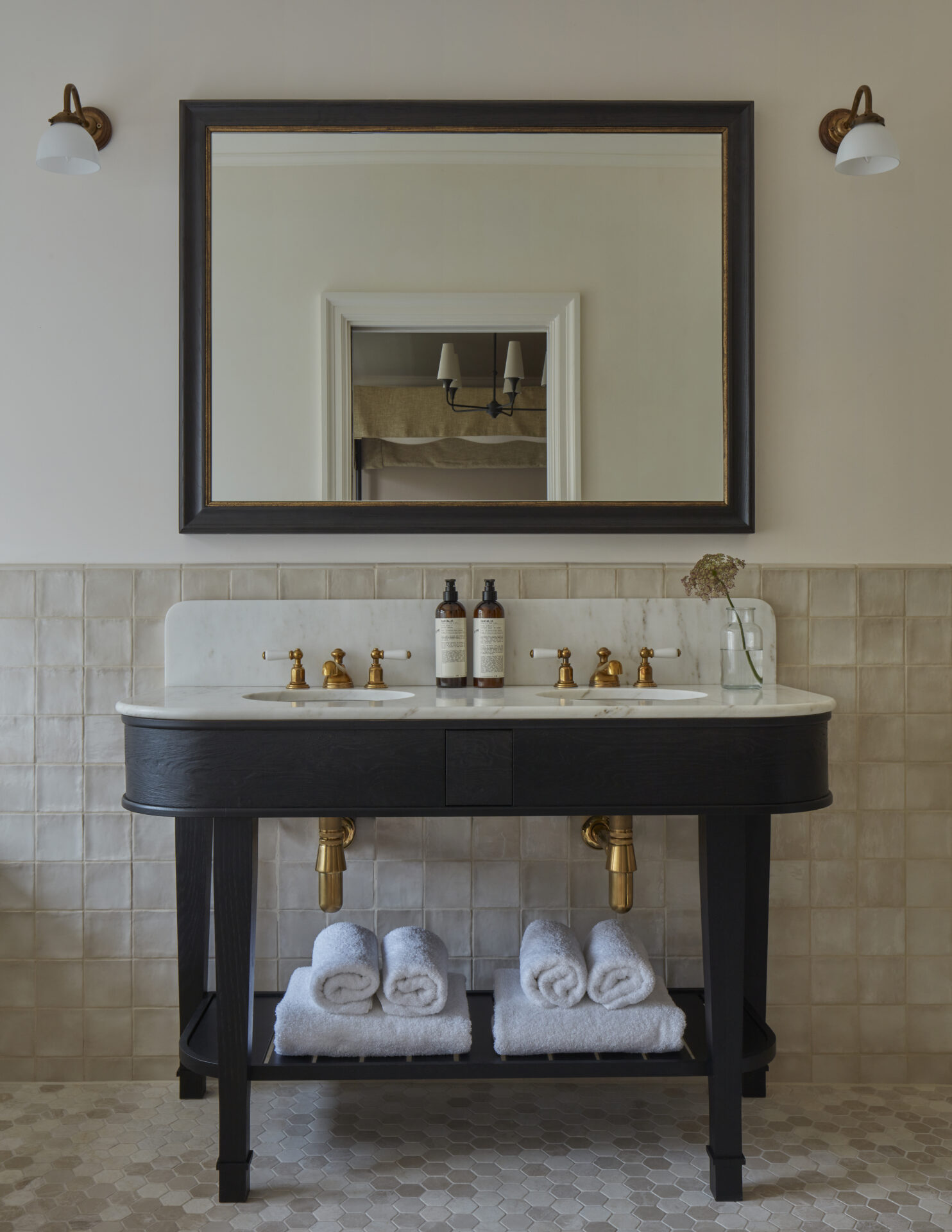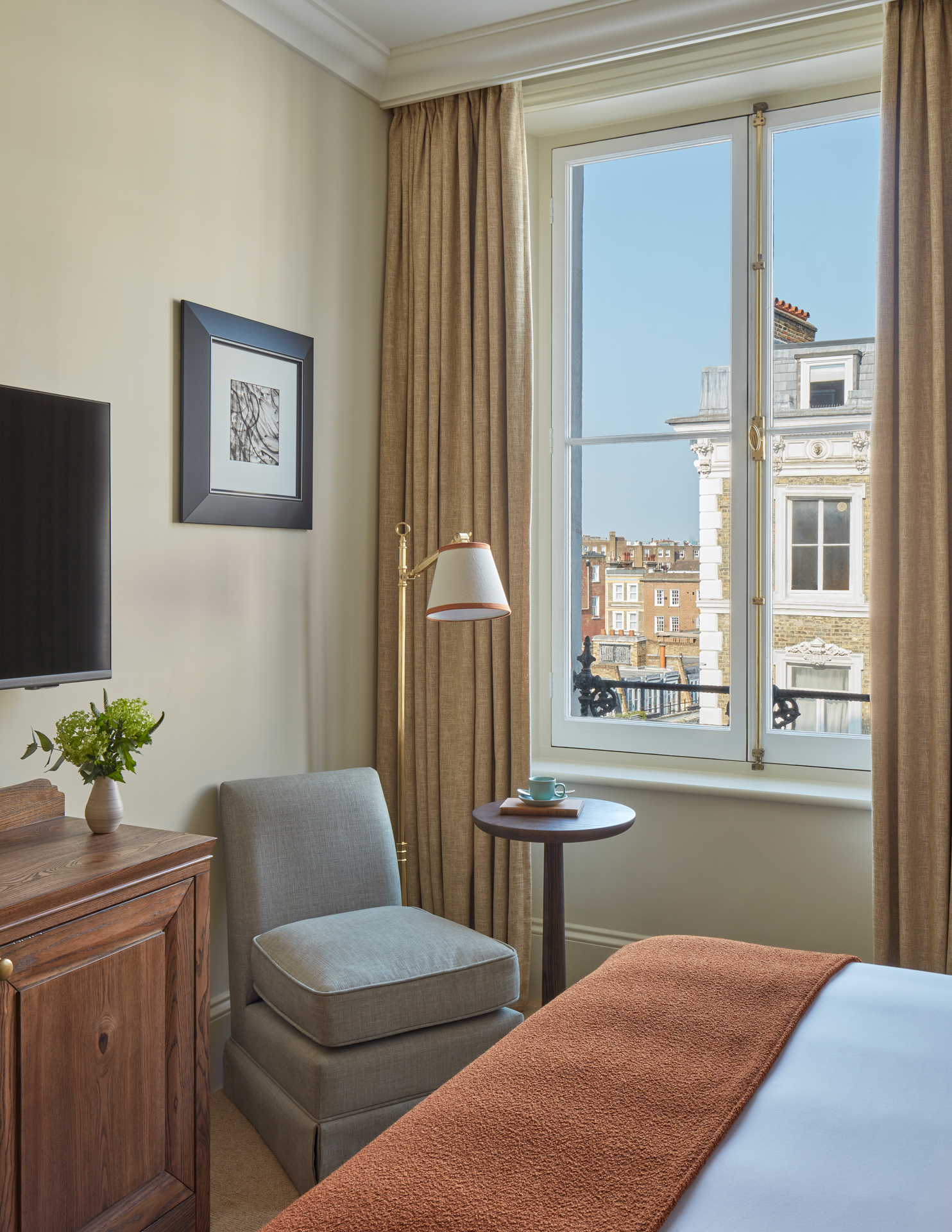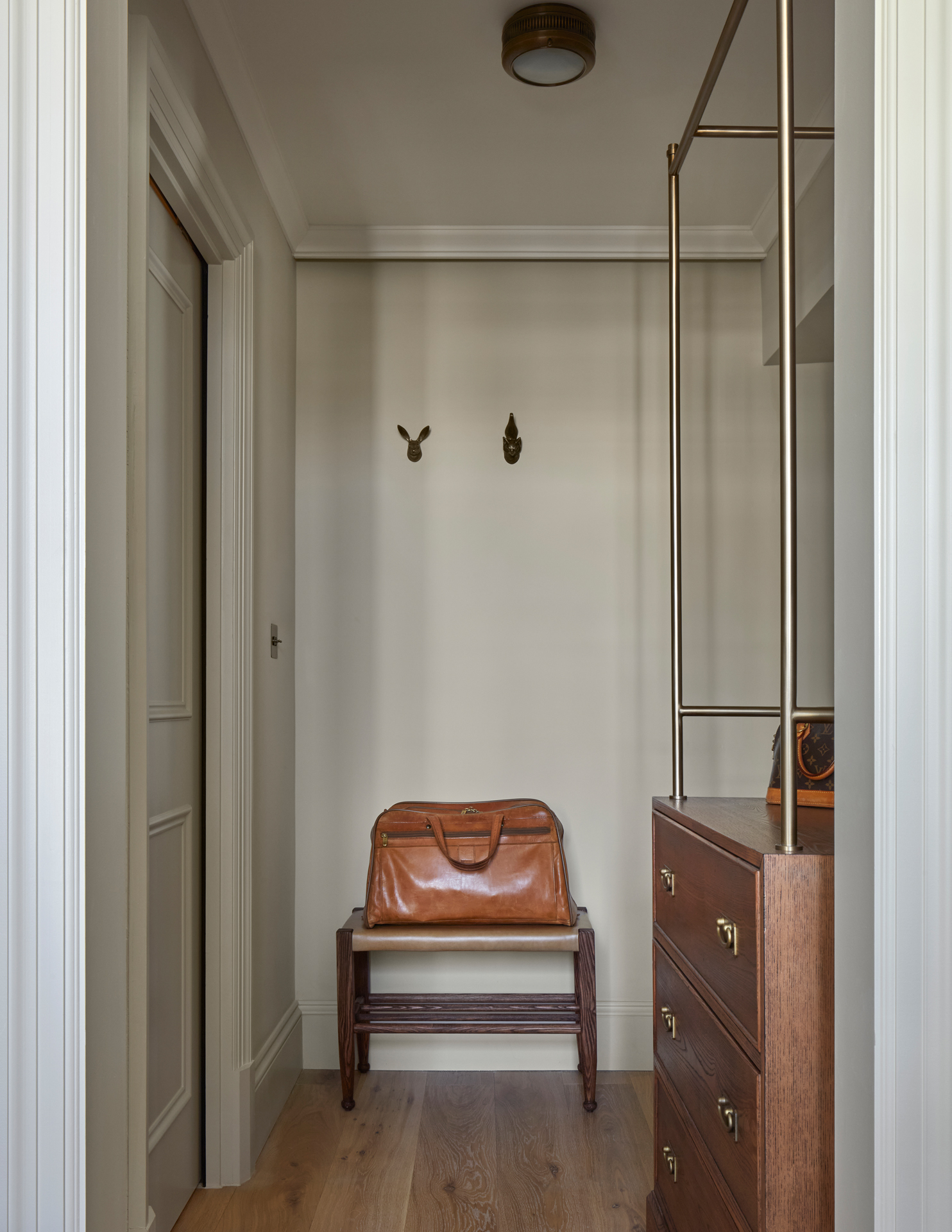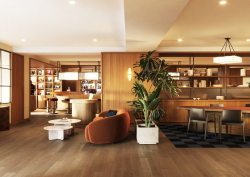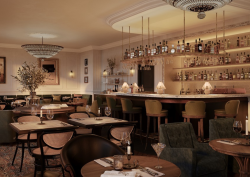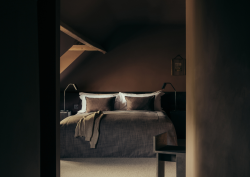Tucked just behind the bustling high street of Earl’s Court, Templeton Garden is a serene, almost secretive, escape from London’s urban sprawl. Without veering into anything remotely kitsch – because this property is far too poised for that – my stay felt like stepping into a woodland world, with quiet luxury in mind…
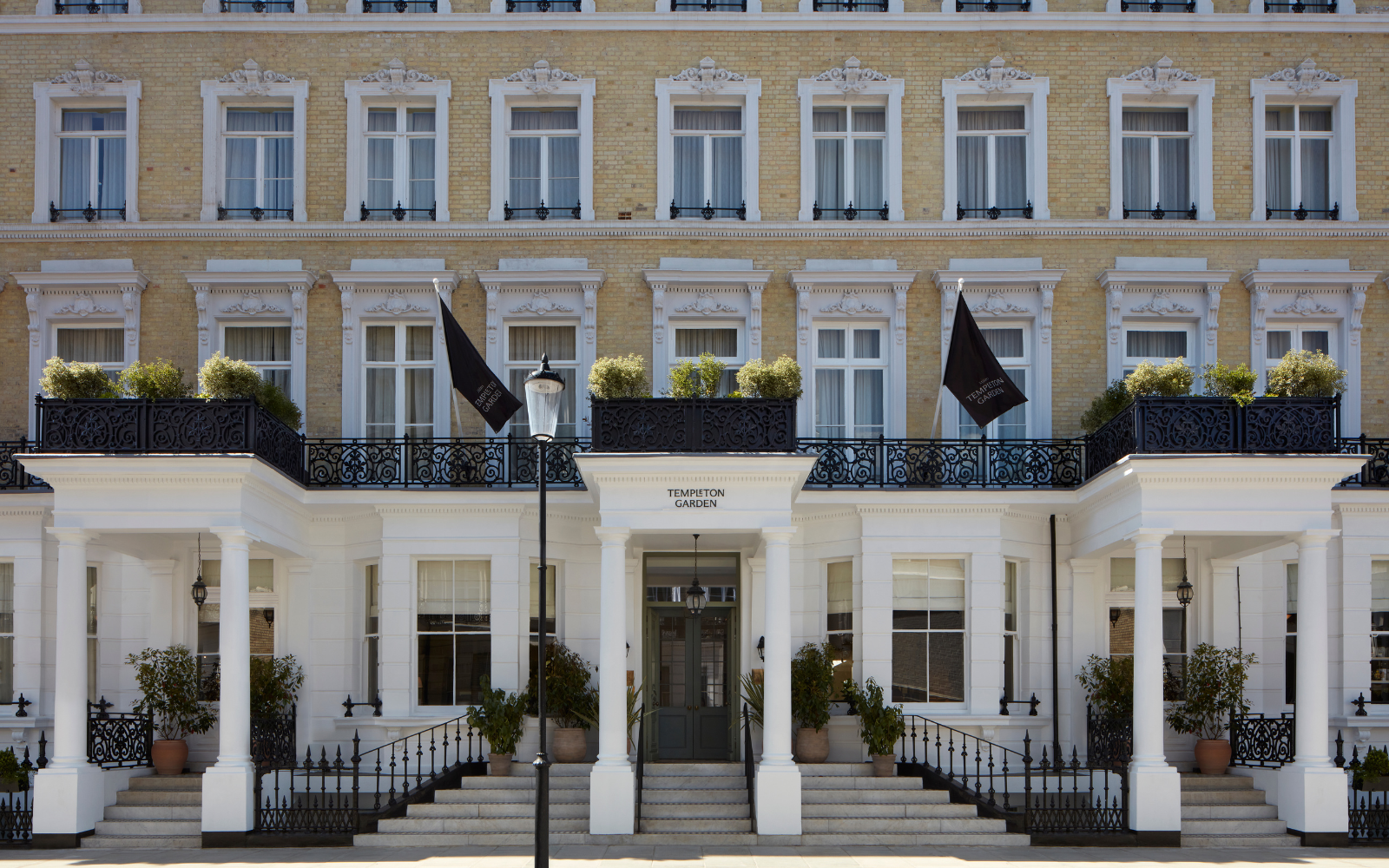
With a contemporary ‘conservatory’ rear extension, a generous lawned garden (where I watched a fox cub doze in the afternoon sun), interiors swathed in velvety, earthen hues, and a blooming rapport with its neighbourhood – people, businesses, and animals alike – it is hard to believe that Miiro’s Templeton Garden is in the heart of Kensington, not nestled in the pastoral idylls of another era.
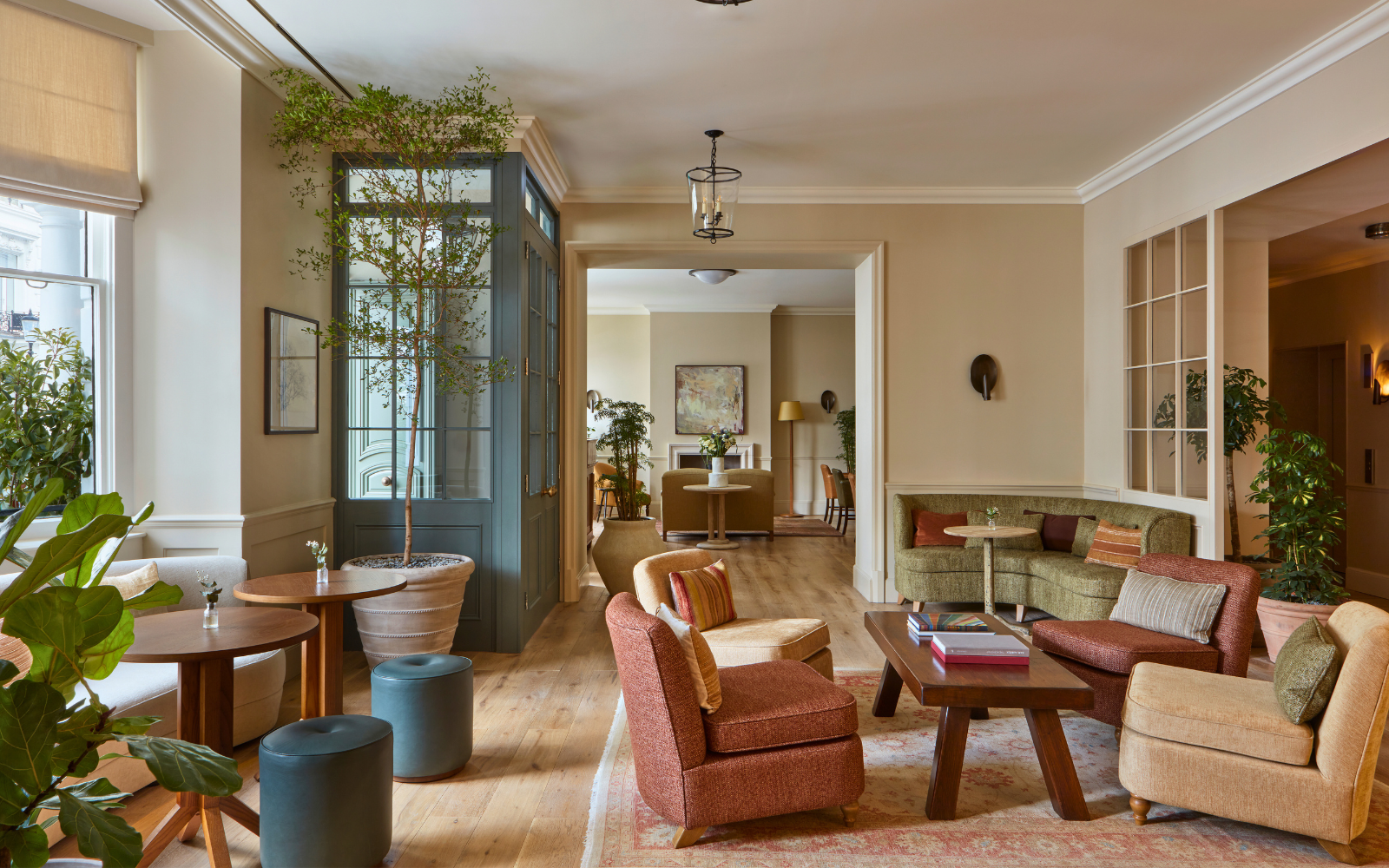
Image credit: James McDonald
Opened in April 2025, the hotel is among the latest additions to Miiro’s fast-growing portfolio of delectable European stays. And like its siblings – Le Grand Hôtel Cayré in Paris, The Mansard in Gstaad, and Borneta in Barcelona (review coming soon) – Templeton Garden sits effortlessly in place.
Approaching the forest-green front door – original in look and flanked by lush foliage – the scene is set. Once seven Victorian townhouses, converted into a hotel in the 1970s, the terraced façade now frames a central entrance that quietly commands attention.
A Victorian tile design leads you up the steps from the street, transporting you with discerning design before you even step inside. And when you do, the space opens up like a welcoming friend. A clear sightline draws the eye from the front door straight through to the rear garden, thanks to a striking glass extension by architecture studio Holland Harvey. Designed to echo a row of Victorian conservatories, it fills the entrance hall with natural light, fresh air, and views of tall trees swaying along the garden edge.
The hotel is a masterclass in creative collaboration. Interiors by James Thurstan Waterworth, Founder of Thurstan studio and former European Design Director at Soho House, speak to the building’s historic bones while placing it firmly in the now.
In the reception, beneath the conservatory-style canopy, walls are washed in contemporary sepia tones. Plush, low-slung velvet seating in rosy hues and richly grained wooden coffee tables create cosy corners you’ll want to sink into – book, cocktail, or laptop in hand. While potted trees and delicate foliage is dotted throughout; though you are in central London, you will never be more than a few steps from the organic at Templeton.
Branching off from the expansive lobby, the Library – with an edit by Raven Smith – and check in desk, Pip’s, Pippin’s, and the Sprout bar complete the hotel’s ground-floor narrative – each space offering its own design rhythm, yet harmonising with the whole. These are not just places to sit, dine or drink, but extensions of the hotel’s central idea: that considered design, like good hospitality, should feel effortless.

Sprout | Image credit: James McDonald
Pippin’s, the hotel’s main restaurant, with its open kitchen, garden-facing aspect and outside terrace area, breathes like the rest of the hotel: elegant but never precious. The materials speak gently. Natural, grained woods, softened metals and deep upholstery invite the guest to linger. The food, too, follows suit. Menus draw from local sources and even the hotel’s own garden – folding foraged elements into familiar British flavours reimagined with care. And, oh, the chicken and chips; I have since returned for.
Opposite, Sprout is where the garden turns nocturnal. The bar space glows beneath Cox London’s oak-branch chandelier – part installation, part illumination – casting quiet shadows across a room designed for pause and conversation. While decorative artist Tess Newall’s hand-painted mural, drawn directly from the garden’s own foliage, wraps the dining room in a soft, botanical embrace. Seated in the bar at early evening, the terracotta-pink hued walls perfectly aligned with the saturated colour of the sunset – a rather romantic moment between nature and design.
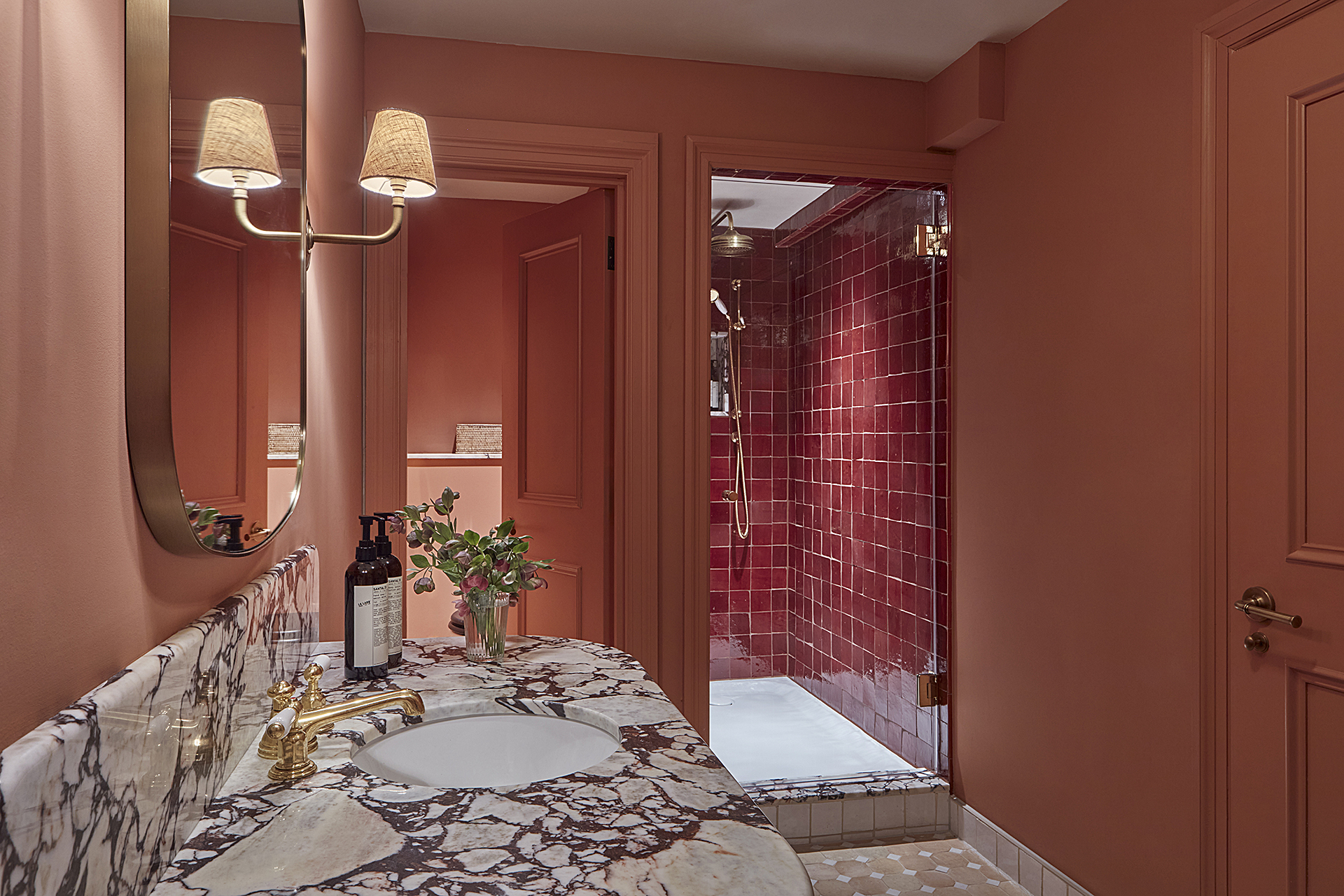
Image credit: Templeton Garden
A playful counterpoint to the calm of the rest of the hotel, Sprout’s cocktail programme is devised around ‘keystone elements’, be it an ingredient, a colour, or even a seasonal note: still refined, still rooted in place, but with a flicker of wit. I can highly recommend the Crystal Mint Grasshopper, a velvetised peppermint cocktail, washed with Ocho Tequila, peach amazake and Vetiver, with a chocolate dusting. Dangerously delicious.
Pip’s, meanwhile, opens directly onto the street – a deliberate move to welcome in the Earl’s Court neighbourhood. With fluted glass, weathered timber, and a warm palette of biscuit and blush, the space reads as a love letter to vintage London cafés, reimagined through a contemporary lens. By day, it is croissants, coffee or fresh mint tea; by evening, a slower kind of casual dining, where locals blend with guests.
Spread across seven floors, Templeton Garden reveals more as you climb (up and down). In the basement: a cocooning private dining space with curved windows offers an intimate, burrow-like view of the garden; a state-of-the-art gym, where even the equipment is wrapped in natural wood; and Miiro’s signature Refresh Room, with shower, charging point and locker, designed for use before check-in or after check-out. It is these small luxuries that speak volumes.
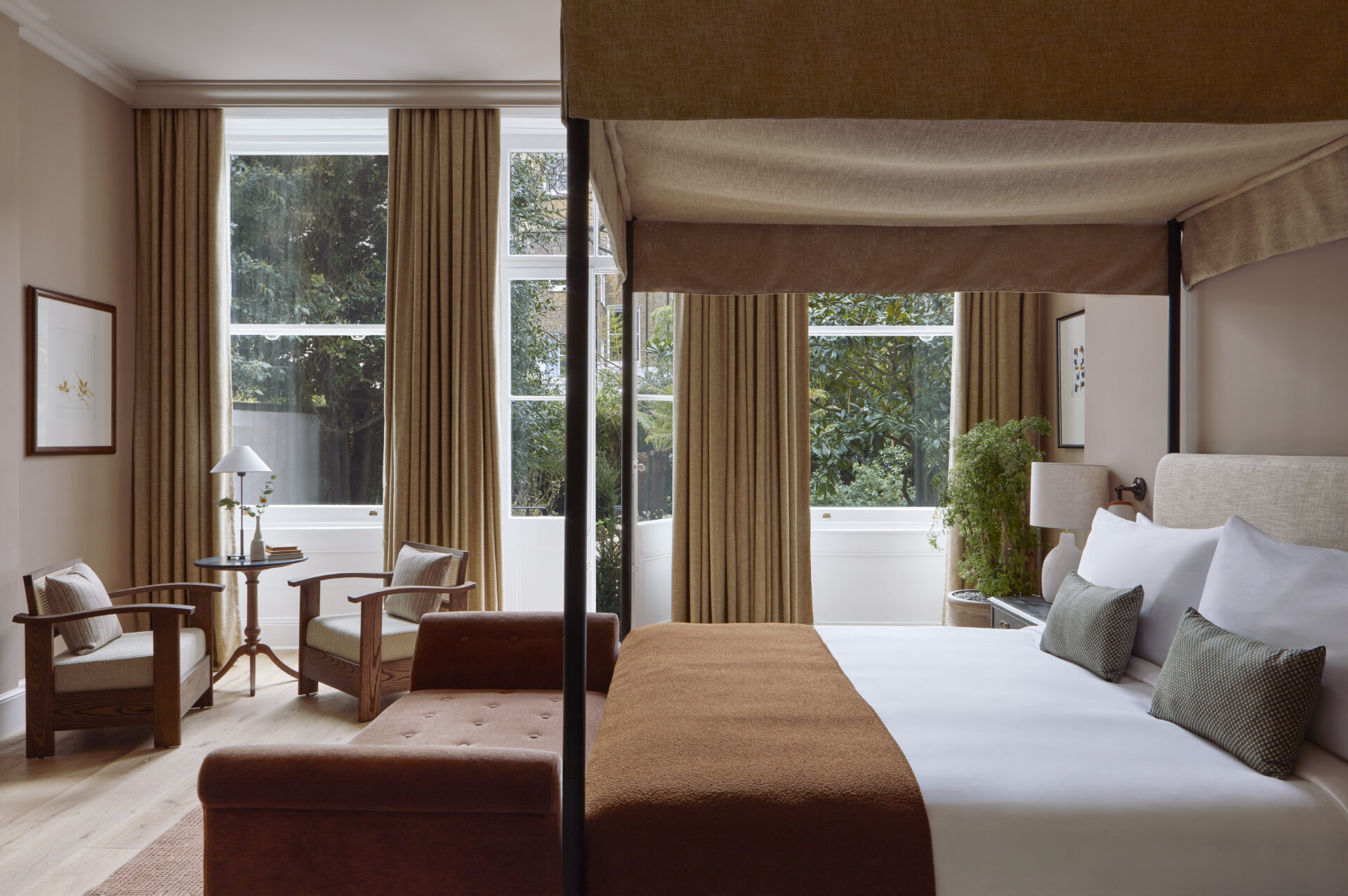
The Templeton Garden Suite | Image credit: James McDonald
On the ground floor, The Templeton Garden Suites deliver Miiro’s ‘Full Works’ experience. Infused with English rustic elegance – terracotta tones, linen textures, and freestanding bathtubs – they come with a private garden terrace and direct access to the hotel’s central green. Super king four-posters, floor-length windows, lounge-like seating and a sense of restful grandeur complete the mood.
Upstairs, rooms are bright and quietly sumptuous, connected by original, ornate staircases. Delicate nods to Earl’s Court’s former ‘artist in residence’, Beatrix Potter, are woven in with gentle restraint – brass coat hooks shaped like small animal heads, for instance – details that, as James Thurstan Waterworth noted during a tour of the property, were essential to avoiding anything remotely kitsch. Some rooms feature balconies; others offer bird’s-eye views of the garden below. Bathrooms are a particular delight, with raspberry- or pearl-toned tiles, Perrin & Rowe brassware, and beautifully weighted fixtures that bring a sense of depth and intimacy.
Everywhere at Templeton Garden, the dialogue between inside and out is deliberate – visual, atmospheric, material. The garden isn’t a backdrop; it is the heart. It informs the palette, the textures, the cocktails, the murals, even the mood. At Templeton Garden, nature isn’t designed around, but designed with, and it is fancifully encompassing. The property so eloquently illustrates what is possible when design feels truly, and beautifully, placed.
Main image credit: Holland Harvey






